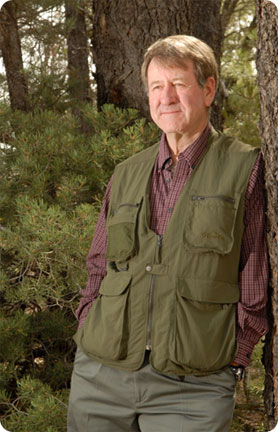By Wally Covington,
Executive director, Ecological Restoration Institute
Regents’ professor, School of Forestry
This week, we celebrate the signing of the Flagstaff Watershed Protection Project‘s final Record of Decision by the U.S. Forest Service, which clears a total of 8,669 acres for treatment through mechanical thinning, hand thinning and prescribed burning. The watershed project is a monumental event for the community because it’s an example to the nation of a municipality funding restoration work on national forest land in order to restore its forests and protect its water supply.
In 2012, Flagstaff voters passed a landmark city bond initiative now known as the Flagstaff Watershed Protection Project. The $10 million bond pays for forest restoration treatments in the Dry Lake Hills area north of town and around the Lake Mary-Mormon Mountain watershed, a critical city water source.
For 19 years, the Ecological Restoration Institute at Northern Arizona University has collaborated with the City of Flagstaff and the U.S. Forest Service to provide the best available science to inform forest restoration. The university has supported the watershed project from the beginning.
Voters overwhelmingly approved the bond by 73.6 percent of the vote because they witnessed the devastating effects of the 2010 Schultz fire. That fire scorched 15,000 acres of the San Francisco Peaks, resulted in severe post-fire flooding events east of town, and cost a combined estimated total of $133-147 million, according to a cost accounting study by Northern Arizona University’s Rural Policy Institute. The burned area could have been treated for $1,000 an acre—a $15 million investment that may have prevented the catastrophic wildfire and its after effects.
We know that if a fire similar to the Schultz fire were to burn in the hills above town, the NAU campus and downtown Flagstaff would be directly impacted by the post-fire floods. A study by NAU researchers shows that storm water runoff could exceed that of a 100- or 500-year flood event and result in a deluge of water, mud and debris through the heart of town. Conservative estimates of the financial damages are from $489-$986 million.
Through this collaboration, Flagstaff addresses head-on the two major concerns for western communities today—fire and water. Maintaining healthy forests ensures that we can avoid devastating fires and protect our scarce water resources.



